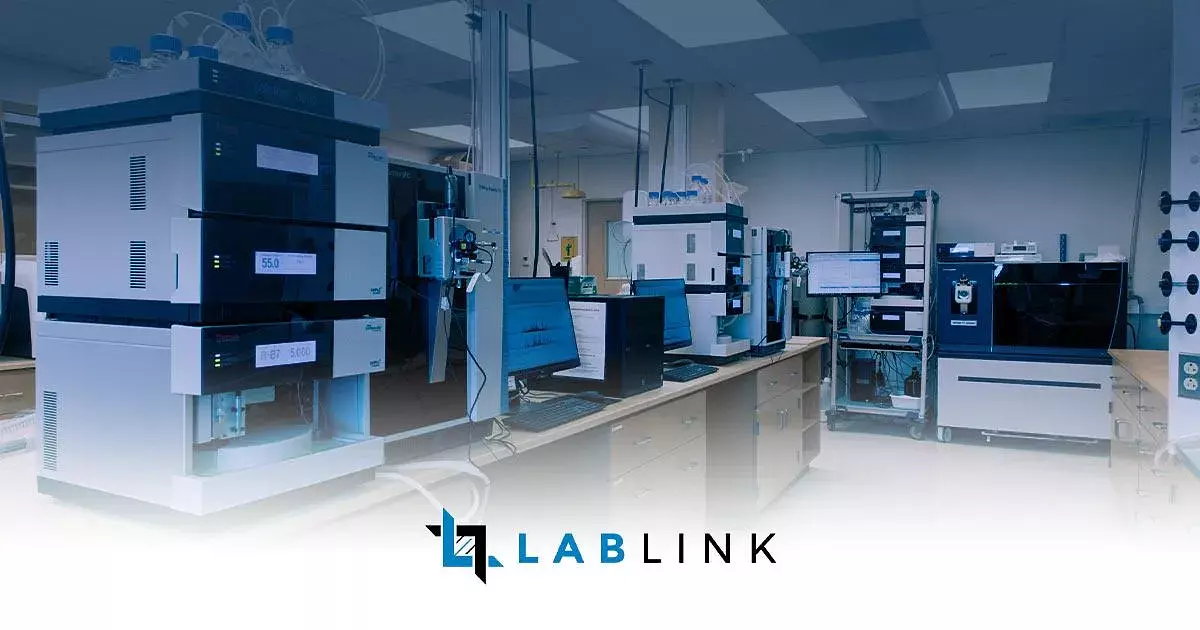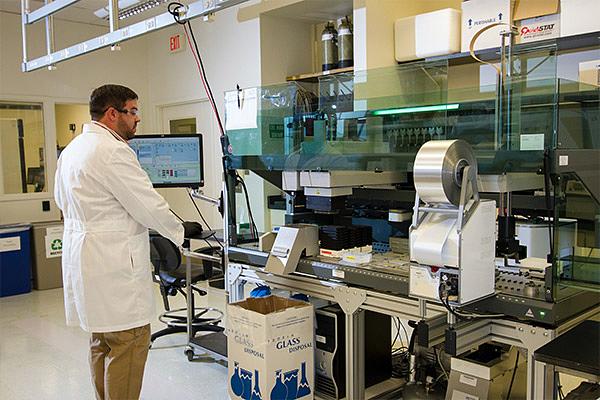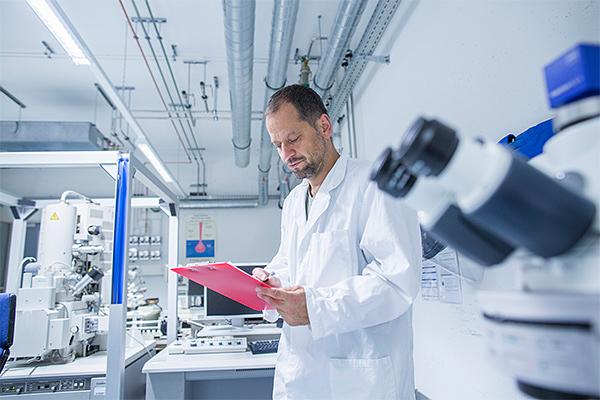 Lab equipment is an indispensable in biotechnology. Yet, not all equipment holds the same standards. Ensuring top-notch quality is vital to keep our experiments on track.
Lab equipment is an indispensable in biotechnology. Yet, not all equipment holds the same standards. Ensuring top-notch quality is vital to keep our experiments on track.
Why It Matters:
Imagine, you're all geared up to conduct groundbreaking experiments, and your equipment failed. That's where quality indicators come into play. These indicators act as our lab superheroes, revealing if our equipment is up to the task.
Join me in exploring this guide tailored for Biotech Managers. Together, we'll uncover the essential quality indicators that keep our lab running. Get ready to master equipment evaluation and ensure our lab tools are always in tip-top shape.
Understanding Equipment Evaluation
A. The Role of Equipment Evaluation
Think of equipment evaluation as a regular check-up for your lab tools. It's about ensuring everything functions as it should. Just like a well-maintained car, our lab tools need to be in top shape for efficient operations.
Equipment evaluation maintains our lab standards. It's not just a visual inspection. It's a thorough examination to ensure every equipment meets our high-quality expectations.
B. Why Quality Assessment Matters
Quality assessment is the backbone of a well-run lab. It ensures tools to perform consistently, allowing us to focus on our experiments without any disruptions.
Assessing quality means verifying that each tool operates efficiently and reliably. It's this evaluation that keeps our lab operations optimized and our experiments on track.
 Essential Quality Indicators
Essential Quality Indicators
A. Reliability: Assessing Equipment's Consistency and Accuracy
Reliability in lab equipment is like having a trusted friend you can count on. You're looking at how consistent and accurate our gear is. Imagine needing a measurement and getting the same result every time you use the equipment—that's reliability! We need tools that perform consistently and give accurate readings to ensure our experiments are reliable and reproducible.
B. Performance Metrics: Understanding Efficiency and Precision in Lab Gear
Performance metrics are like scores that tell us how well our lab tools work. Efficiency means getting the job done quickly without wasting time or resources. Likea fast and efficient car that gets you where you need to go without any delays.
C. Maintenance History: Evaluating Upkeep and Impact on Equipment Quality
Think of maintenance history as checking the health records of our lab equipment. It tells us how well the equipment has been maintained. Equipment that is regularly serviced and maintained is more likely to have a longer lifespan and function better. Understanding its maintenance history, can assess if the equipment is in good shape and capable of delivering accurate results.
 Quality Assessment Techniques
Quality Assessment Techniques
A. Visual Inspection: Identifying Visible Signs of Wear or Damage
Visual inspection is like giving our equipment a once-over. Look for any visible signs of wear and tear, like scratches, dents, or even rust. Like a car, you inspect first before buying it. Making sure it looks good. Checking the appearance of lab equipment gives us a clue about its condition. If something doesn't look right, it's an indication of deeper issues that need attention.
B. Functional Testing: Checking Equipment for Accuracy and Proper Functioning
Functional testing is like taking the equipment for a test drive. This puts it through its paces to see if it works as it should. Turning it on, running a few tests, and making sure all its functions work serves as your test drive. We need to ensure our lab gear functions correctly to avoid any surprises during experiments.
C. Ensuring Accuracy and Reliability Through Calibration Checks
Calibration verification is like fine-tuning an instrument. Lab equipment needs to be calibrated regularly to ensure accuracy. We need to check if our equipments are calibrated. This ensures that the measurements and results are accurate and reliable. This contributes to the credibility of our experiments.
Factors Influencing Equipment Quality
A. Age and Usage: Impact of Equipment Age and Frequency of Use on Quality
Just like with anything else, the age and how much we use lab equipment can affect its quality. Think of it like a phone or a computer; the more we use it, the more it might wear out over time. Older equipment might not function as well as newer ones, especially if it has been used extensively. Knowing the age and usage history helps us gauge how much life the equipment might have left.
B. Technology Updates: Considering Advancements Affecting Equipment Quality
Technology moves at lightning speed. Upgrades and advancements can significantly impact equipment quality. Think of it like getting a software update on your phone; it becomes better and more efficient. Equipment that uses newer technology might have more features or improved accuracy, making it a better fit for our lab's needs.
C. Brand Reputation: Assessing the Reliability of Different Equipment Brands
Not all brands are created equal. Some brands have a reputation for making top-quality equipment that lasts longer and performs better. It's like choosing between different car brands; some are known for their reliability and quality. Knowing which brands have a good reputation helps us make informed decisions about the equipment we choose for our lab.
Importance of Quality Evaluation
A. Enhancing Lab Performance: How Quality Evaluation Contributes to Efficiency
Quality evaluation acts as a booster for our lab's performance. Think of it as fine-tuning a musical instrument before a performance; it ensures everything works smoothly. When our equipment undergoes regular evaluation, it functions at its best. This enhances our lab's overall performance.
B. Cost-Efficiency: Impact of Evaluating Equipment on Cost-Saving Initiatives
Evaluating equipment for quality saves us both time and money in the long run. It's like maintaining a car regularly to avoid major breakdowns. Assessing equipment regularly, catch potential issues early, preventing costly repairs or replacements. This proactive approach helps us make the most of our resources while reducing unexpected expenses.
Evaluating Used Lab Equipment
A. Specific Considerations for Assessing Second-hand Lab Gear
When evaluating second-hand lab equipment, certain factors demand our attention. These considerations go beyond standard evaluation methods due to the equipment's prior usage. We focus on not just the equipment's current state but its history as well. Factors like previous usage, maintenance records, and any alterations made over time play a crucial role in our assessment.
B. Benefits and Challenges of Evaluating Pre-owned Equipment
Evaluating pre-owned equipment presents both advantages and challenges. The benefit lies in the potential cost savings without compromising quality. However, challenges arise in accurately assessing the wear and tear or hidden faults due to previous usage. Balancing these factors helps us make informed decisions when considering second-hand lab gear.
Lablink, is your trusted partner in facilitating the evaluation of pre-owned lab equipment. This helps Biotech Managers in performing comprehensive audits. These audits consider usage history, maintenance, and quality. Managers can make informed decisions, ensuring smooth equipment transitions and reliable equipment purchases.
Throughout this guide, we've talked about how important it is to check if lab tools work well. We looked at things like how reliable they are, how well they do their job, and if they've been taken care of. These things help labs do their research better and get accurate results.
Paying attention to how reliable, efficient, and well-maintained is your lab equipment, your lab runs smoothly. This helps your research be more accurate and efficient.
